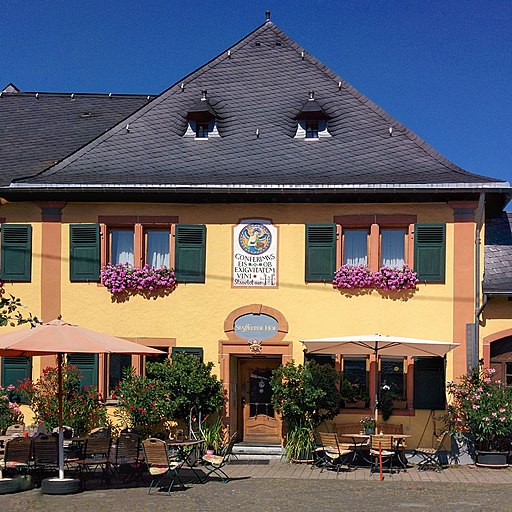1. The oldest businesses in the world¶
This is Staffelter Hof Winery, Germany's oldest business, which was established in 862 under the Carolingian dynasty. It has continued to serve customers through dramatic changes in Europe such as the Holy Roman Empire, the Ottoman Empire, and both world wars. What characteristics enable a business to stand the test of time? Image credit: Martin Kraft

To help answer this question, BusinessFinancing.co.uk researched the oldest company that is still in business in almost every country and compiled the results into a dataset. Let's explore this work to to better understand these historic businesses. Our datasets, which are all located in the datasets directory, contain the following information:
businesses and new_businesses
| column | type | meaning |
|---|---|---|
business |
varchar | Name of the business. |
year_founded |
int | Year the business was founded. |
category_code |
varchar | Code for the category of the business. |
country_code |
char | ISO 3166-1 3-letter country code. |
countries
| column | type | meaning |
|---|---|---|
country_code |
varchar | ISO 3166-1 3-letter country code. |
country |
varchar | Name of the country. |
continent |
varchar | Name of the continent that the country exists in. |
categories
| column | type | meaning |
|---|---|---|
category_code |
varchar | Code for the category of the business. |
category |
varchar | Description of the business category. |
Now let's learn about some of the world's oldest businesses still in operation!